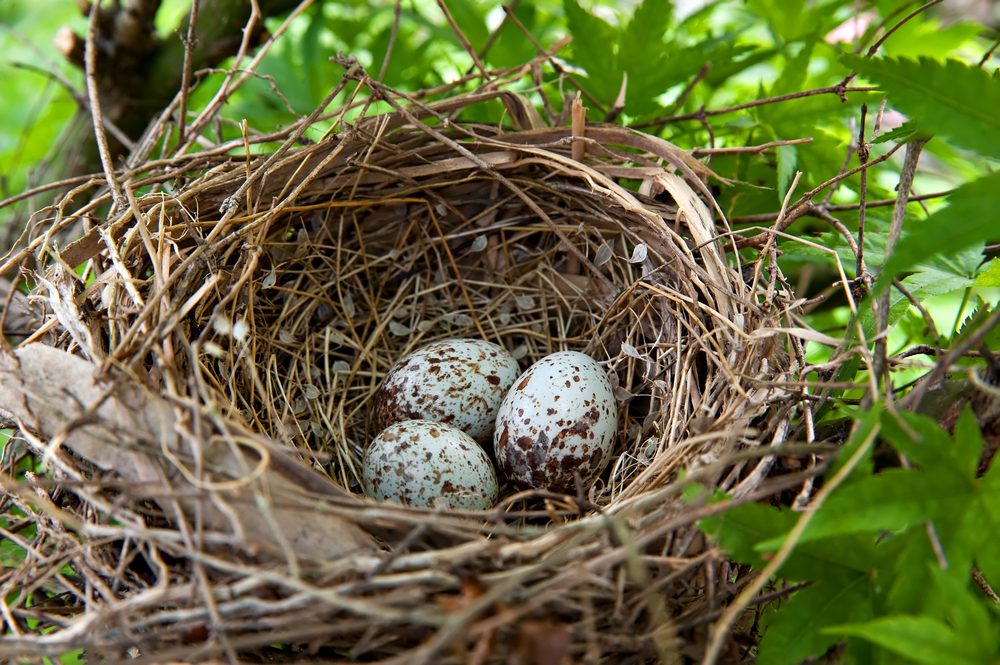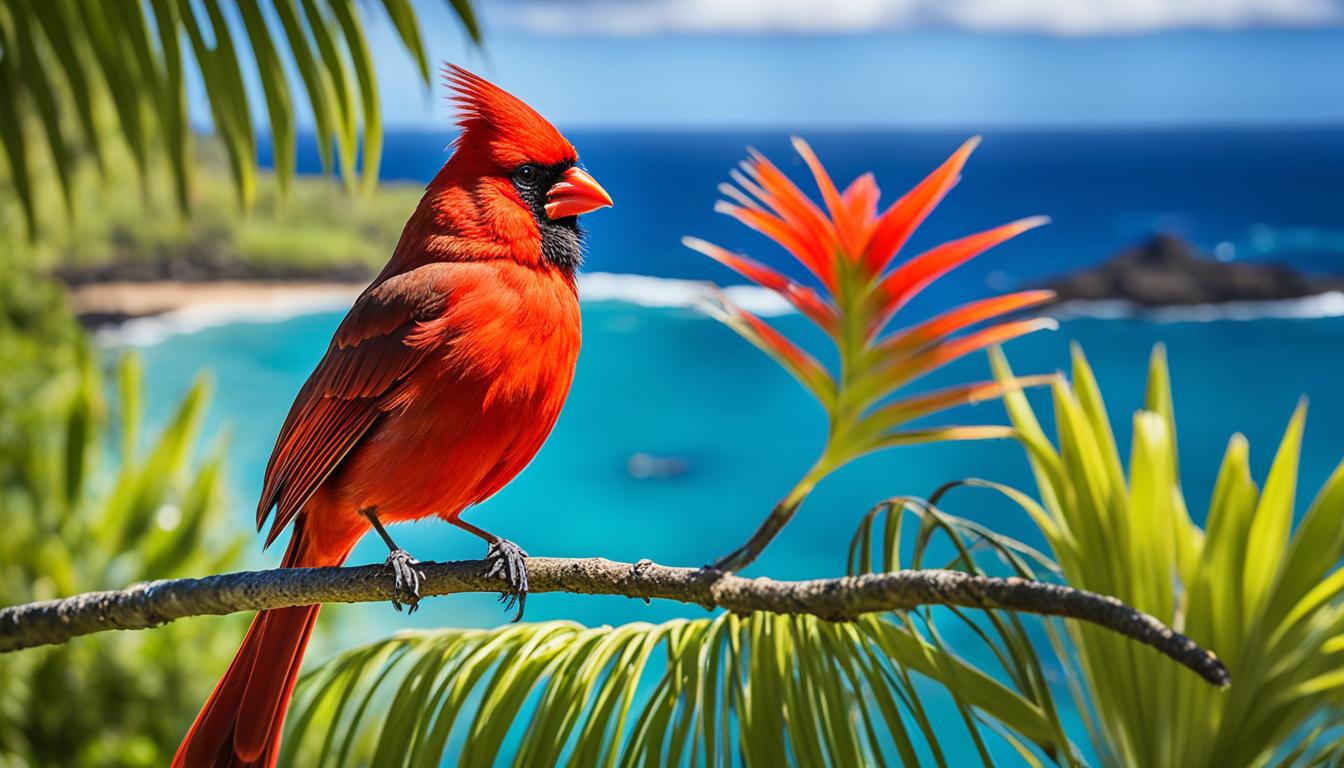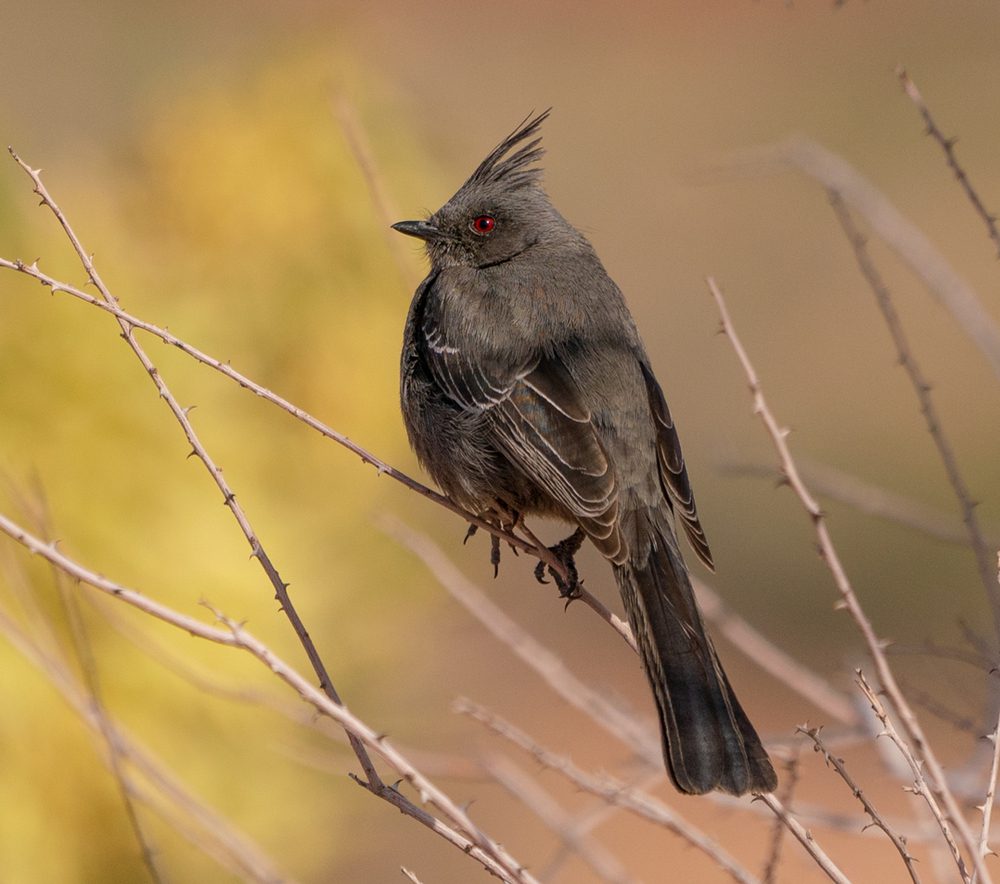Are you wondering if Turkey Vulture vs Hawk rival was real ? The short answer is yes, They are battle in aerial for survival, They always show off unique characteristics and impressive hunting strategies. In this article we will jump into the world of predator birds and comparing about the unique ability between turkey vultures and hawks have.
Table of Contents
Migration Patterns
Both of this bird known for their migration patterns ability. Turkey Vultures known as long travel migrants, they could travel from southern Canada to the southernmost part in United States when the fall and winter months. Meanwhile Hawks have variety of migration pattern that depending on their species, there is some hawks only migrate at short distances while other have long travel with thousand miles.
Flight Characteristics
If you see how turkey vultures and hawks fly, you can see they flying style is really different, that’s because they have different mission on finding food.
Turkey vultures are good at climbing altitude. Its because they have big wings that perfect for gliding high in the sky easily. They have ability to feel warm air, called thermals, and staying in the air for a long time. Also because of this they can travel so far away, which is could be really helpful when they are migrating.
Hawks, in other hands have shorter and rounder wings. This wings make them super agile and fast while hunting down they prey. They can dodge trees and other obstacles easily, also more easy to catch their prey in open spaces. Hawks also have sharp eyesight to help them find their prey from far away, and using their acceleration to quickly catch it. This shock attack is make them a successful hunters in avian world.
So Turkey vulture itself have superiority in flying long distance and climbing high with their big wings, while hawks have superiority in catching their prey with fast speed. Each of this birds have perfect ability to fullfill their own needs and their own way of life.
Feeding Habits

When we talking about eating habits, both of turkey vultures and hawks have different strategies to set them apart.
Turkey vultures concerned to their strong smell sense to identify dead animals within their area to eating. Turkey vultures play really vital role in ecosystem to clean-up dead body in natures, they consume carcasses and stop disease to spread. As a scavengers, turkey vulture mainly feed on animal dead body.
Hawks, in other side, are hunting they prey and rely on this skill to survive, with their sharp talons and beaks they can easily catch and kill they live prey. This skilled birds are targeting small mammals, birds, and reptiles for their main course.
| Turkey Vulture (Carrion Eater) | Hawk (Hunter) |
|---|---|
| Relies on sense of smell to locate carrion | Utilizes sharp talons and beak to capture live prey |
| Feeds on dead animals | Preys on small mammals, birds, and reptiles |
| Considered a scavenger | Recognized as a skilled predator |
Role in Ecosystem
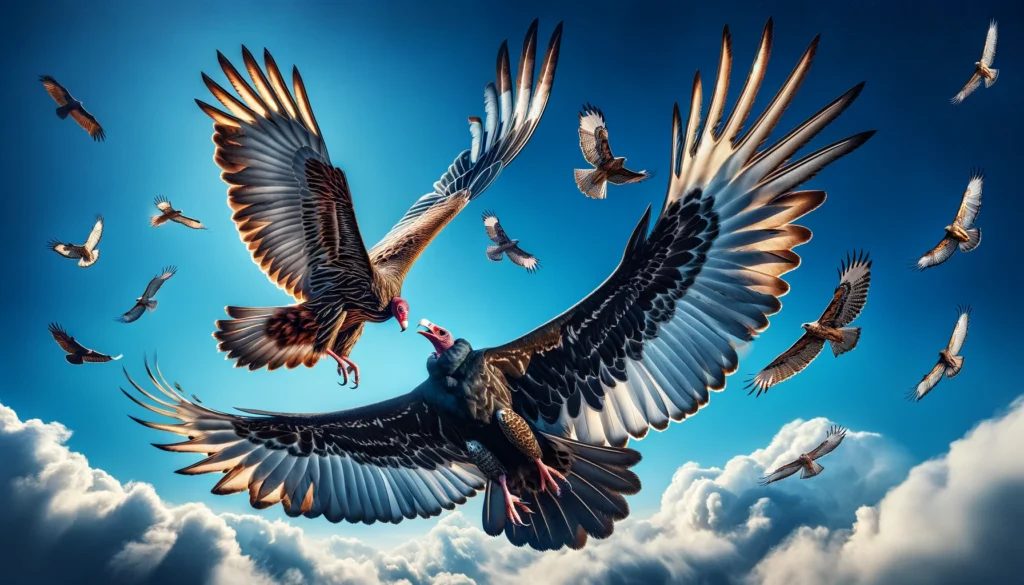
Regardless of their different feeding habits, both of this birds play vital roles in the ecosystem. Hawks help to control the population of small birds and mammals, serving as predator in their food chains. Turkey vultures play as nature clean up crew, stoping the spread of diseases with consuming dead animal body.
With their scavenging roles in ecosystems, turkey vultures could maintaining a health ecosystem and clean ecosystems. While consuming dead body, it could be reducing any risk of infection for other animals and humans.
“Turkey vultures, with their exceptional olfactory abilities, efficiently track and locate carrion. They consume a variety of dead animals, removing potential sources of contamination from the environment.” – Dr. Jane Davis, Avian Ecologist
Hawks, on the other hand, prevent overpopulation and maintain more balanced food for ecosystems. With their role as predator and amazing skill, it could be easy tasks for them.
The interaction both of this birds really contribute to the overall health and balanced within natural environments. Both of this birds supports of biodiversity and make sure the integrity of ecosystems
| Turkey Vulture | Hawk |
|---|---|
| Feeding Habits | Scavenger – Consumes carrion |
| Behavior | Hunter – Captures live prey |
| Flight Characteristics | Broad wings for soaring |
| Migration Patterns | Varies by species – Short to long distances |
| Role in Ecosystem | Nature’s clean-up crew |
Turkey Vulture vs Hawk Identification
When it comes to distinguishing between turkey vultures and hawks, their appearance plays a crucial role. Let’s take a closer look at their unique characteristics.
Turkey Vultures

Easily recognized by their dark brown plumage, featherless heads, and large, hooked bills. These carrion eaters have a wingspan of up to six feet, making them a formidable presence in the sky. One distinctive feature of turkey vultures is their V-shaped wing profile, which they use efficiently while soaring to cover vast distances in search for carrion. [2]
Hawks
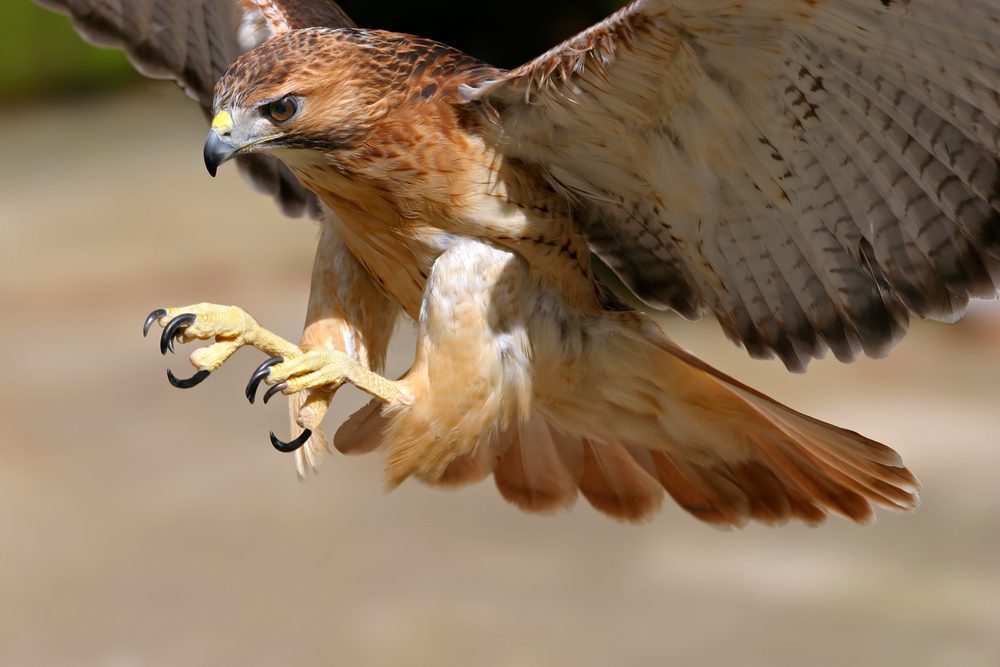
On the other hand, display a wide variety of appearances, depending on the species. They can have different plumage colors, patterns, and sizes, making it challenging for bird enthusiasts to identify them. From the regal red-tailed hawk with its russet-colored plumage to the striking white-tailed hawk with its contrast of dark upperwings and light underwings, there is a remarkable diversity among hawk species.[1]
To aid in identification, birdwatchers often rely on specific markings such as banding patterns, tail shapes, and wing patterns. These details help differentiate between hawk species, enabling enthusiasts to accurately identify these magnificent birds.
Raptor Identification Tips
When trying to distinguish between turkey vultures and hawks, here are some general tips:
- Focus on body size and shape: Turkey vultures are larger and more robust than most hawks.
- Look for distinct flight patterns: Turkey vultures soar effortlessly, floating on air currents, while hawks tend to have more active and agile flight.
- Pay attention to coloration and markings: Turkey vultures have uniformly dark plumage, while hawks exhibit a wide range of colors and patterns.
- Observe the head shape: Turkey vultures have featherless heads, while hawks typically have feathered heads.
By considering these key factors and using field guides or online resources, birdwatchers can enhance their bird identification skills and learn to differentiate between these fascinating avian species.
“The identification of hawks and vultures is a rewarding challenge that allows bird enthusiasts to deepen their knowledge of these majestic birds of prey.” – Birdwatching Magazine
| Identification Features | Turkey Vulture | Hawk |
|---|---|---|
| Plumage Color | Dark brown | Varies depending on species |
| Head | Featherless | Typically feathered |
| Wing Shape | Distinctive V-shaped profile | Varies depending on species |
| Size | Large | Varies depending on species |
| Flight Pattern | Effortless soaring | Active and agile |
Conclusion
Turkey vultures and Hawks are captivating species, but they have different roles and function in nature with some their own cool ways. Turkey vulture knows with their big wing spans to help them climb through air and catch warm air called thermals. With this big wings they can easy fly without flapping too much. Hawks in the other side have super agile and quick flying style, they have super sharp claws to catch they prey and them alive.
Although they have different roles. Hawks hunting for over population prey and turkey vultures cleaning up that dead animals, both of them really helping nature to balance the ecosystems. Knowing this things will help us to appretiate them more. I hope Whether we see hawk flying accros the sky for hunting live animals or turkey vulture soaring high hunting for dead bodies we can easy identify them because of this article. With this information we can know how diverse and amazing birds wildlife can be.
FAQ
What are the migration patterns of turkey vultures and hawks?
Turkey vultures are long-distance migrants, traveling from southern Canada to the southernmost parts of the United States during the fall and winter months. Hawks exhibit varied migration patterns, with some species migrating short distances and others undertaking long journeys spanning several thousand miles.
How do the flight characteristics of turkey vultures and hawks differ?
Turkey vultures have broad wings adapted for soaring, allowing them to glide and ride thermals. Hawks, on the other hand, have shorter and more rounded wings, enabling them to maneuver with agility and speed during hunting.
What are the feeding habits of turkey vultures and hawks?
Turkey vultures are carrion eaters, relying on their keen sense of smell to locate dead animals for feeding. They primarily feed on carcasses and are considered scavengers. Hawks, on the other hand, are hunters, using their sharp talons and beaks to capture and kill live prey such as small mammals, birds, and reptiles.
What roles do turkey vultures and hawks play in the ecosystem?
Turkey vultures act as nature’s clean-up crew, consuming carcasses and preventing the spread of diseases. Hawks help regulate populations of small mammals and birds, serving as important predators within their habitats.
How can turkey vultures and hawks be identified based on appearance?
Turkey vultures have dark brown plumage, featherless heads, and a distinctive V-shaped wing profile when soaring. Hawks display a wide range of appearances depending on the species, including various plumage colors, patterns, and sizes, making identification challenging for bird enthusiasts.


